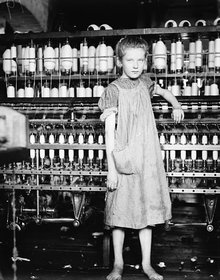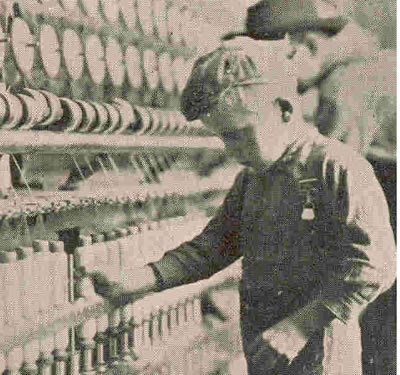madkins
Registered

*The Klan had size and clout, with more than 3 million members.
MentalFloss
The Grand Wizards of Elementary School
(summary)
October 2011
By Miss Cellania
http://www.neatorama.com/2011/10/28/the-grand-wizards-of-elementary-school/#more-54775
How the KKK helped get children out of the factories and into the classroom.
Members of the Ku Klux Klan liked to think of themselves as white knights. And when it came to compulsory education for schoolchildren they were. To understand how this came to pass, you have to go back to the 1820s, when about half the laborers in America’s cotton mills were children under the age of 15. After all, employers could get away with paying children much lower wages, and the little ones had energy to burn. Mary Kenney O’Sullivan, vice president of the National Women’s Trade Union League, put the situation bluntly: “Wherever child labor prevails there is a corresponding decrease in employment for adults.”
In fact, getting rid of the kids was one of the first causes to unite the American label movement. When labor leaders realized they couldn’t just turn youngsters out in the streets to fend for themselves, they proposed a one-two punch of ending child labor laws and requiring school.
Massachusetts was the first state to pass a compulsory education law. In 1837, its state legislature barred factory owners from hiring anyone under age 15 who hadn’t attended public school for at least three months during the previous year. The law was ignored, and factory owners kept hiring kids anyway. Five years later, Massachusetts passed a second law, which went after factories more directly, limiting the amount of time children could work. When this law was ignored as well, the state made education compulsory in 1852.

By 1884, 16 states had instituted laws that forced children to go to school. Business owners, enamored with their short, low cost labor pool, denounced the status as “communist” and “un-American.” But the percentage of children in the workforce in cotton mills fell nonetheless; by 1890 it was just 10 percent. And not coincidentally, adult workers were awarded higher wages and better working conditions over the same period. From 1840 to 1880, average wages rose as much as 150 percent, while at the same time, the average workday fell from 13-14 hours to 10-11 hours.
At the turn of the century, labor unions lobbied for compulsory education nationwide, and they soon found an unexpected ally. The Ku Klux Klan supported the idea of public schools as a way of forcing immigrants to conform to white, Protestant culture. By 1918, labor unions had succeeded in getting compulsory education laws passed in every state. Two years later, a Catholic organization in Oregon demanded that the laws be amended to include private schools. The KKK took a more outspoken stance, and its membership grew quickly in support of the public school system.
But the fight wasn’t over -just because more kids were forced to go to school didn’t mean that they couldn’t work in factories. After all, there were always nights, weekends, and summer vacations, right? In 1923, a Klan newspaper warned that big business wanted to keep child labor legal to “secure a cheaper class of labor and hold the price paid to the American citizen down to a minimum at all times.” The Klan was nearing the apex of its size and clout, with more than 3 million members. Since a good portion of its ranks were poor whites, the Klan was more sympathetic to this group’s economic interests. It went on a full-throttle campaign to get kids out of the factories for good.

Around the same time that the national KKK began strongly advocating for a federal ban on child labor, a rift opened up between the Northern Klansmen and Southern industrialists. In the ensuing public relations battle, the industrialists tried to win points with Southern voters by portraying the debate over child labor as another fight against the Yankees. But the pull of the KKK was too great, and the Klan won a victory for white children nationwide. Southern business leaders agreed to child labor laws, but only as long as the adult minimum wage remained low and African-American children were prohibited from attending white public schools. In 1938, The result: White children across the country were guaranteed an education.
Skara Brae,
madkins
*Google.com
